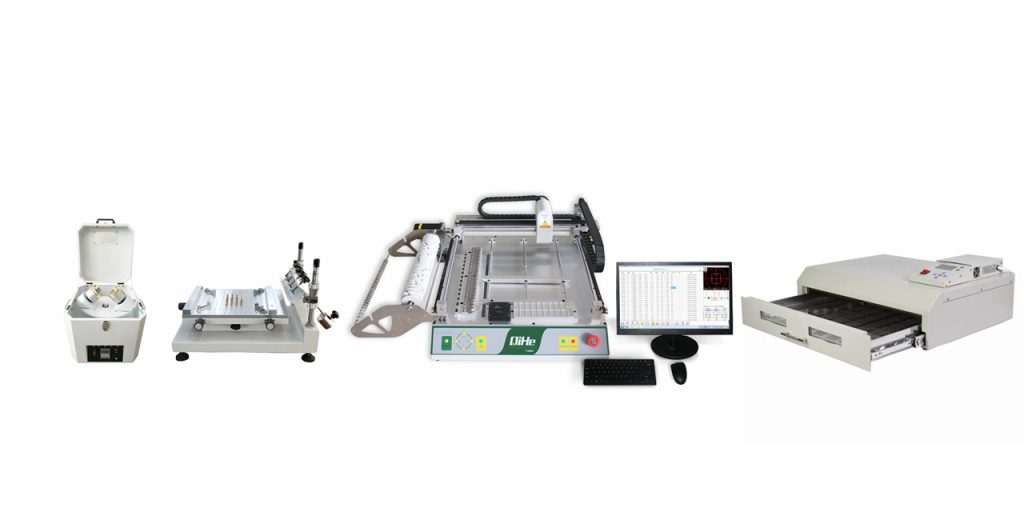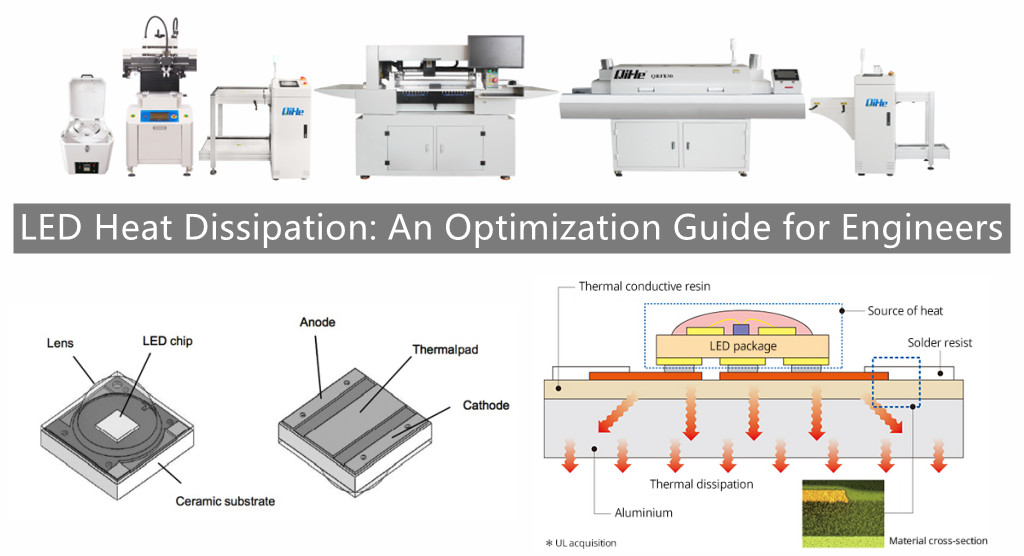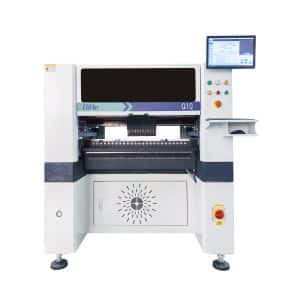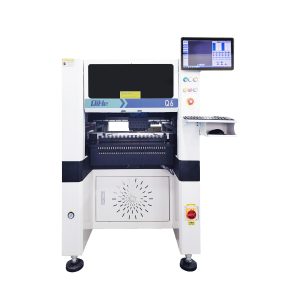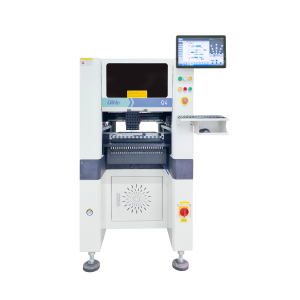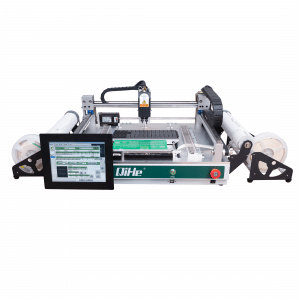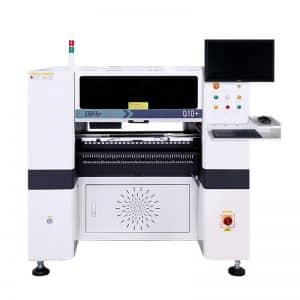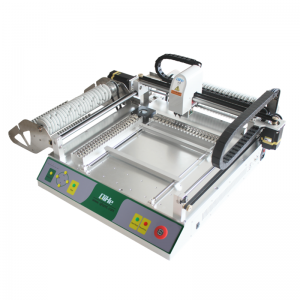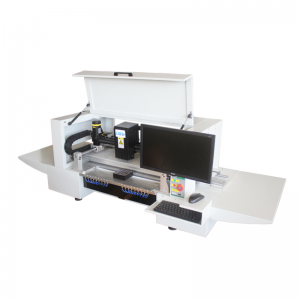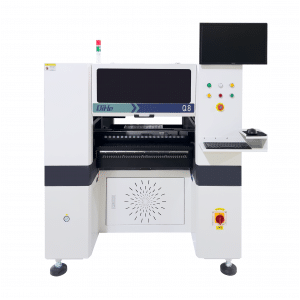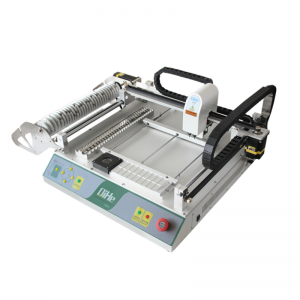With the continuous evolution of LED materials and packaging technology, the brightness of LED products has been continuously improved, and the application of LEDs has become wider and wider. Using LEDs as display backlights has become a hot topic recently, mainly because of different types of LED backlight technologies. Compared with the traditional cold cathode tube (CCFL), it has advantages in color, brightness, lifespan, power consumption and environmental protection demands, thus attracting active investment from the LED making machine industry.
The original single-chip LED has low power, limited heat generation, and little heat problem, so its packaging method is relatively simple. However, in recent years, with the continuous breakthrough of LED material technology, LED packaging technology has also changed, from the early single-chip cannonball package to a flat, large-area multi-chip package module; its working current is from the early 20mA The low-power LEDs have progressed to the current high-power LEDs of about 1/3 to 1A. The input power of a single LED is as high as 1W or more, and the packaging methods have even evolved to 3W and 5W.
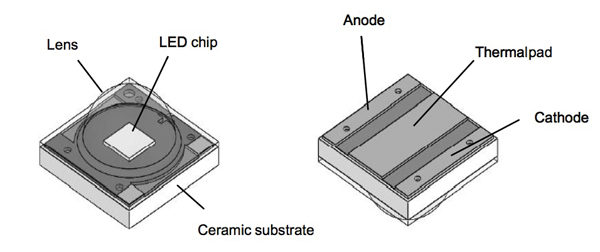
Since the thermal problems derived from high-brightness and high-power LED systems will be the key to affecting product functions, in order to quickly discharge the heat generated by LED components to the surrounding environment, we must first start with thermal management at the packaging level (L1 & L2). The current practice in the industry is to connect the LED chip to a heat spreader with solder or thermal paste, and reduce the thermal impedance of the packaging module through the heat spreader. This is also the most common LED packaging module on the market. The main sources are Lumileds, Internationally renowned LED manufacturers such as OSRAM, Cree and Nicha.
Many terminal application products, such as mini projectors, automotive and lighting sources, require more than thousands or tens of thousands of lumens in a specific area, and it is obviously not enough to rely on single-chip packaging modules , Moving towards multi-chip LED packaging and direct bonding of chips to substrates is the future development trend.
The problem of heat dissipation is the main obstacle in the development of LEDs as lighting objects. Using ceramics or heat pipes is an effective way to prevent overheating, but heat management solutions increase the cost of materials. The purpose of high-power LED heat dissipation management design is to effectively reduce The thermal resistance between the chip heat dissipation and the final product, R junction-to-case is one of the solutions using materials that provide low thermal resistance but high conductivity, allowing heat to be transferred directly from the chip to the outside of the package enclosure.
Of course, LED heat dissipation components are similar to CPU heat dissipation. They are mainly air-cooled modules composed of heat sinks, heat pipes, fans, and thermal interface materials. Of course, water cooling is also one of the thermal countermeasures. Taking the most popular large-size LED TV backlight modules at present, the input power of the 40-inch and 46-inch LED backlights is 470W and 550W respectively, and 80% of them are converted into heat, and the required heat dissipation is about Around 360W and 440W.
So how to take these heat away? At present, the industry uses water-cooling methods for cooling, but there are concerns about high unit price and reliability; there are also heat pipes combined with heat sinks and fans for cooling. Problems such as noise still exist. Therefore, how to design a fanless heat dissipation method may be an important key to determine who will win in the future.
The following is an introduction to several heat dissipation methods and heat dissipation materials.
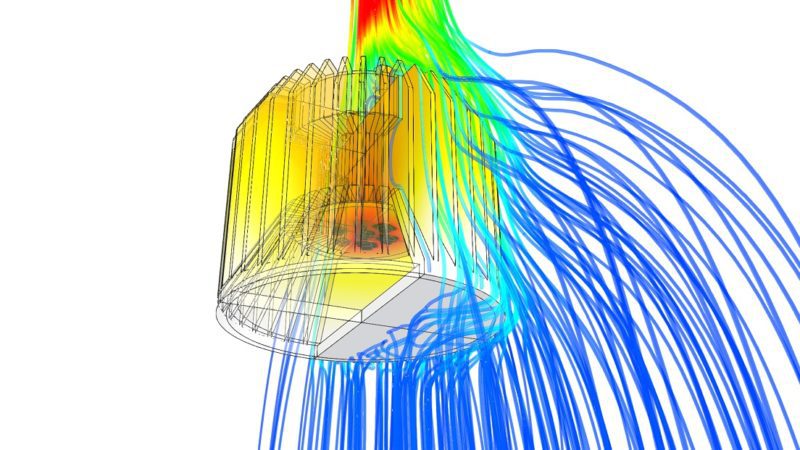
Cooling method
Generally speaking, according to the way heat is taken away from the radiator, radiators can be divided into active cooling and passive cooling. The so-called passive heat dissipation means that the heat of the heat source LED light source is naturally dissipated into the air through the heat sink. The heat dissipation effect is proportional to the size of the heat sink, but because of the natural heat dissipation, the effect is of course greatly reduced. In the equipment without requirements, or used to dissipate heat for components that do not generate much heat, for example, some popular motherboards also adopt passive heat dissipation on the North Bridge, and most of them adopt active heat dissipation. Active heat dissipation is forced by cooling devices such as fans. It can efficiently take away the heat emitted by the heat sink, which is characterized by high heat dissipation efficiency and small size of the device.
Active heat dissipation can be divided into air-cooled heat dissipation, liquid-cooled heat dissipation, heat pipe heat dissipation, semiconductor refrigeration, chemical refrigeration and so on.
Air-cooled air-cooled heat dissipation is the most common heat dissipation method, and relatively speaking, it is also a relatively cheap method. Air cooling is essentially the use of fans to take away the heat absorbed by the radiator. It has the advantages of relatively low price and convenient installation. However, it is highly dependent on the environment. For example, its heat dissipation performance will be greatly affected when the temperature rises and overclocking.
liquid cooling
Liquid cooling is driven by the pump to forcibly circulate the heat of the radiator. Compared with air cooling, it has the advantages of quietness, stable cooling, and less dependence on the environment. The price of liquid cooling is relatively high, and the installation is relatively troublesome. At the same time, try to follow the instructions in the manual when installing to get the best heat dissipation effect. For the consideration of cost and ease of use, liquid cooling usually uses water as the heat conduction liquid, so liquid cooling radiators are often called water cooling radiators.
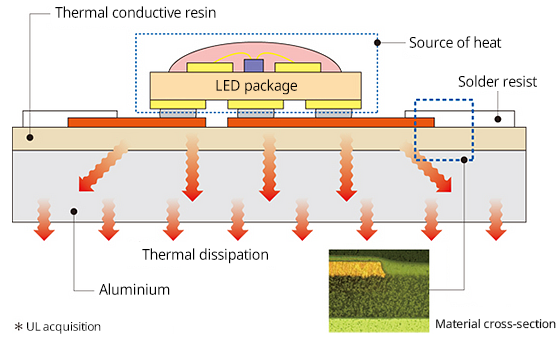
semiconductor refrigeration
Semiconductor refrigeration is to use a special semiconductor refrigeration chip to generate temperature difference when energized to cool. As long as the heat at the high temperature end can be effectively dissipated, the low temperature end will be continuously cooled. A temperature difference is generated on each semiconductor particle, and a refrigeration sheet is composed of dozens of such particles in series, thereby forming a temperature difference on the two surfaces of the refrigeration sheet. Using this temperature difference phenomenon, combined with air cooling/water cooling to cool the high temperature end, can obtain excellent heat dissipation effect. Semiconductor refrigeration has the advantages of low cooling temperature and high reliability. The temperature of the cold surface can reach below minus 10°C, but the cost is too high, and it may cause a short circuit due to too low temperature. Moreover, the technology of semiconductor refrigeration chips is not mature enough at present. practical.
chemical refrigeration
The so-called chemical refrigeration is to use some ultra-low temperature chemical substances, and use them to absorb a large amount of heat when melting to reduce the temperature. In this regard, the use of dry ice and liquid nitrogen is more common. For example, using dry ice can lower the temperature below minus 20°C, and some more “perverted” players use liquid nitrogen to lower the CPU temperature below minus 100°C (theoretically). Of course, due to the high price and short duration, this The method is more common in the laboratory or extreme overclocking enthusiasts.
Generally speaking, ordinary air-cooled radiators naturally choose metal as the material of the radiator. For the selected material, it is hoped that it has high specific heat and high thermal conductivity at the same time. It can be seen from the above that silver and copper are the best thermal conductive materials, followed by gold and aluminum. But gold and silver are too expensive, so heat sinks are currently mainly made of aluminum and copper. In comparison, both copper and aluminum alloy have their own advantages and disadvantages: copper has good thermal conductivity, but it is more expensive, difficult to process, too heavy, and the heat capacity of copper radiators is small, and it is easy to oxidize . On the other hand, pure aluminum is too soft to be used directly. Only the aluminum alloy used can provide sufficient hardness. The advantages of aluminum alloy are low price and light weight, but the thermal conductivity is much worse than copper.
Therefore, in the history of the development of radiators, products of the following materials have also appeared:
Pure aluminum radiator
The pure aluminum radiator is the most common radiator in the early stage. Its manufacturing process is simple and the cost is low. So far, the pure aluminum radiator still occupies a considerable part of the market. In order to increase the heat dissipation area of its fins, the most commonly used processing method for pure aluminum radiators is aluminum extrusion technology, and the main indicators for evaluating a pure aluminum radiator are the thickness of the radiator base and the Pin-Fin ratio. Pin refers to the height of the fins of the heat sink, and Fin refers to the distance between two adjacent fins. The Pin-Fin ratio is the height of the Pin (excluding the thickness of the base) divided by the Fin. The larger the Pin-Fin ratio means the larger the effective heat dissipation area of the radiator, which means the more advanced the aluminum extrusion technology. Pure copper radiator
The thermal conductivity of copper is 1.69 times that of aluminum, so under the premise of other conditions being the same, the pure copper radiator can take heat away from the heat source faster. However, the texture of copper is a problem. Many radiators advertised as “pure copper” are not actually 100% copper. In the list of copper, the copper content of more than 99% is called acid-free copper, and the next grade of copper is red copper with a copper content of less than 85%. Most of the pure copper heat sinks on the market currently have a copper content between the two. However, the copper content of some inferior pure copper radiators is even less than 85%. Although the cost is very low, its thermal conductivity is greatly reduced, which affects the heat dissipation. In addition, copper also has obvious disadvantages, such as high cost, difficult processing, and high mass of heat sinks hinder the application of all-copper heat sinks. The hardness of red copper is not as good as that of aluminum alloy AL6063, and the performance of certain machining (such as grooving, etc.) is not as good as that of aluminum; the melting point of copper is much higher than that of aluminum, which is not conducive to extrusion (Extrusion) and other problems.
Copper-aluminum bonding technology
After considering the respective shortcomings of copper and aluminum, some high-end radiators in the market currently use a copper-aluminum combination manufacturing process. These heat sinks usually use copper metal bases, and the heat dissipation fins are made of aluminum alloy. Of course, In addition to the copper bottom, there are also methods such as using copper pillars for the heat sink, which is also the same principle. With a high thermal conductivity, the copper bottom surface can quickly absorb the heat released by the CPU; the aluminum fins can be made into the shape that is most conducive to heat dissipation with the help of complex process means, and provide a large heat storage space and release it quickly. A balance point has been found in all aspects.
Read more: LED Heat Dissipation: An Optimization Guide for EngineersBest seller SMT Machine :Qihe smt line products
-
Q10 SMT Automatic pick and place machine 10 Heads 100 Slots High Precision and High Efficiency SMT/LED Assembly
-
Q6 SMT pick and place machine 6heads 50slots With PCB Rail Servo Pick&Place Machine
-
Q4 SMT pick and place machine 4heads 50slots With PCB Rail Servo Pick&Place Machine
-
TVM802B Plus SMT pick and place machine 2heads 58slots desktop pick&place deluxe edition
-
QM10 SMT pick and place machine 10heads 80slots Fully Automatic Chip mounter SMT Assembly
-
TVM802BX SMT pick and place machine 2heads 46slots desktop pnp mounter deluxe edition
-
QL41 SMT pick and place machine 4heads 8slots LED for 1.2meters led strip pick&place machine
-
Q8 SMT pick and place machine 8heads 80slots Fully Automatic Chip mounter SMT Assembly
-
TVM802AX SMT pick and place machine 2heads 29slots desktop deluxe edition SMT Pick&Place Machine
What is SMT in engineering?
Surface mount technology is a part of the electronic assembly that deals with the mounting of electronic components to the surface of a PCB. Electronic components mounted this way are called surface-mounted devices (SMD). SMT was developed to minimize manufacturing costs while making efficient use of board space.Qihe SMT company develops and produces all kinds of SMT equipment suitable for world wide market, including pnp machine,reflow oven,stencil printer,pcb handling machines,and other products.
Small desktop pick and place machine TVM802A,TVM802B,TVM802AX,TVM802BX series suitable for beginners, for hobbiest or low vol usag.
Advanced level 4-head LED strip placement QL41 led machines and with rail universal series TVM925S,TVM926S,
Fully automatic 6-10-head placement QM61,QM62,QM81,QM10,machines, which are suitable for high volume mass production in factories.
Know more about us https://www.qhsmt.com/about-qihe-smt-equipment/
Follow us on social media https://www.facebook.com/Qihesmt/
What is SMT in programming?
Offline Automated Programming vs Inline SMT Programming
Qihe pick and place machine can be programmed directly on the SMT equipment .
Or Coordinates can also be imported csv file through programming software.
Currently supported software such as protel,DXP,Altium Designer,Pads,Candes,proteus,DXP.
Inline SMT programming is a solution to consider for narrow segments of device programming requiring short programming times, with medium to high volume, for just one device type.
WHAT IS SMT pick and place machine?
SMT (Surface Mounted Technology) is a comprehensive system engineering technology, which covers substrates, design, equipment, components, assembly processes, production accessories and management. When it comes to SMT pick and place machines, the automatic SMT production line requires automatic loading and unloading machine, automatic solder paste printing machine, placement machine, reflow soldering machine, AOI inspection equipment, conveyor,connecting table, etc. For these SMT assembly line equipment, Qihe SMT can offer you machines in prototype SMT line, small SMT production line, mass production SMT line at low SMT line cost. Contact us now if you are interested.
